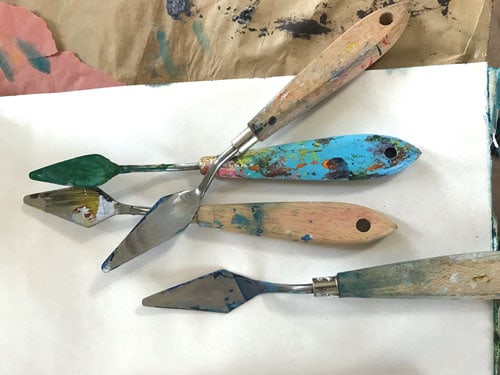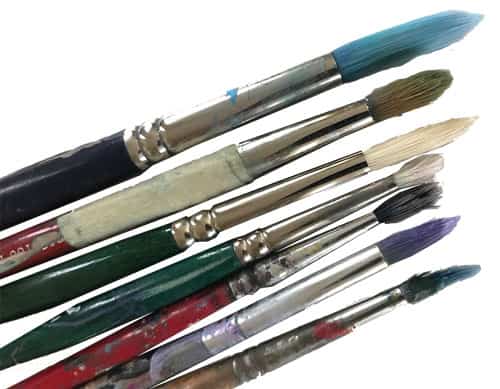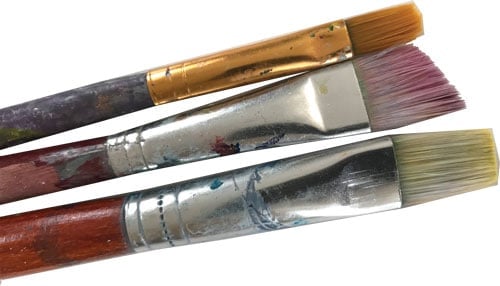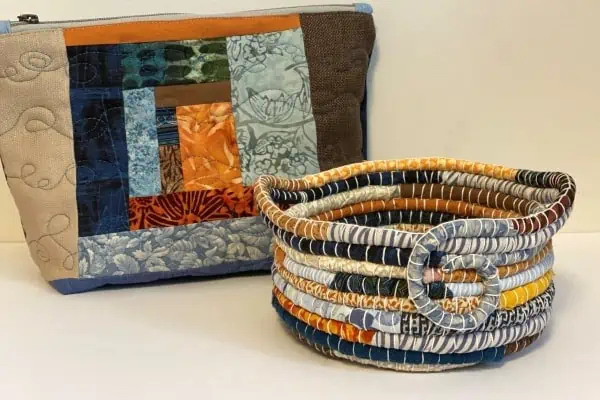Round brushes are good for thin lines and points
Brushes, if carefully chosen and cared for, can be your greatest tool for years to come.
Painters need brushes to create the best marks and strokes to convey their visual messages. They work hard loading and unloading paint. Usually, you will need a variety of sizes—super small, small, medium and large—and an extra-large for wash or priming.
Brushes—bristles, sizes, shapes …
Bristles may be made of real animal hair—sable (marten), squirrel, ox, camel, hog and goat—or a synthetic replica made of polyester. I prefer a synthetic, due to not wanting to hurt the piggy bank or the animals!
Watercolour requires thin, soft bristles that work well as they absorb water and little pigment.
Acrylics require a slightly heavier bristle, for the medium density of the paint. Oils need to be thickest strands as they go through the heaviest work with pigments, mediums and thinners.
I mentioned you need about five sizes. Shapes are up to you and what you are trying to accomplish, especially if you are more abstract or realist. Are your edges sharp and straight, or loose and soft, or both?
What about size? Are you a miniaturist or are you working with larger scales? A round brush is the one that does thin lines and pointy bits really well; I usually keep a super-small and medium in all types of paint (it helps to get the finer details like a highlight in an eyeball or signing my name once it is finished).
A flat brush is kind of squared off and has a straight edge that also comes at an angle. These are useful for strong linear strokes and washes.
The bigger the size, the more area it covers! My absolute favourite is the filbert. This is a flat brush with rounded edges; seems to me to be the most versatile shape.
A tip for practising brush strokes …
Try experimenting with the position of your hand, kind of like a conductor—use your wrist and arm and get flexible with the way you push that paint around. If you can practice this one thing, you will need less types of brushes. Another great tip I can share is to flip each side and try spinning as you’re in mid stroke. This will help to unload the paint better as you go.

Loading up and cleaning up …
Now, finally, in order to keep that brush shape, do not overload the brush, do not mix piles of paint with the brush (use a pallet knife) and keep the paint on the first top three-quarters, leaving the metal part clean. And make sure to clean brushes as you go (not letting paint dry there as you’re working), and do a final clean-up at the end with dish soap and water, then squeeze out the liquid and lay flat to dry. Have Fun!
Artfully yours,
Emma






